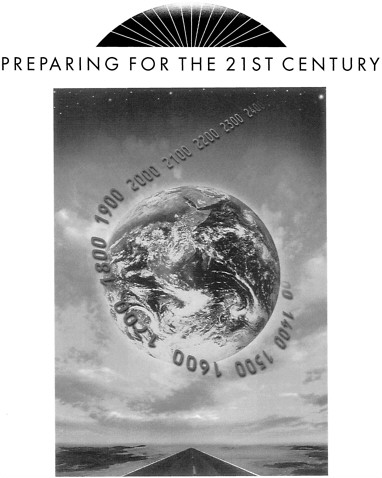Background
Since Abraham Lincoln approved the Congressional charter of the National Academy of Sciences in 1863, the Academy complex—now made up of the National Academy of Sciences, the National Academy of Engineering, the Institute of Medicine, and the National Research Council—has been advising government about the impacts of science and technology on society. The Academy complex provides independent advice to government by appointing committees of experts who serve without compensation, asking these committees to prepare draft reports by consensus, and subjecting these drafts to rigorous independent scientific review before release to ensure their quality and integrity. To avoid potential conflict of interest and bias, careful attention is given to the composition and balance of study committees.
As the 21st century approaches with science and technology assuming increasing importance in society, the Governing Board of the National Research Council has synthesized, summarized, and highlighted principal conclusions and recommendations from recent reports to inform decisions in a number of key policy matters. The resulting series of papers do not address all the intersections of science and technology with public policy, but they do address some of the most important. They are directed to federal administrators, members of Congress, university administrators, leaders of nongovernmental organizations, and all others involved in the development and implementation of public policies involving science and technology.
This paper discusses policies that can ensure that scientific and technical information is fully integrated into the mix of considerations that determine environmental policies.
Previous reports from the Academy complex have had a major effect on environmental policy. They have helped in the development of the major terms, concepts, and methods used by the risk-assessment community; fostered the broadening of risk evaluation of pesticides in food to include the effect on children; helped to improve the quality of environmental-research programs in federal agencies; and contributed to the substitution of a de minimis (negligible risk) standard for the zero risk Delaney clause (a provision requiring that there essentially be no detectable concentrations of pesticides in processed foods which have been shown to induce tumors in humans or animals).
The growing role of science and technology in managing environmental quality has led to a greatly expanded portfolio of activities at the Academy complex related to the environment and natural resources. In recent years, Academy groups have studied issues as varied as the carcinogens that occur naturally in food, river management in the Grand Canyon, global climate change, and the long-term disposal of radioactive wastes. Reports on subjects such as these have provided objective analyses of issues around which great controversy swirls. The issues summarized in this paper from past reports continue to be relevant to the work of the Academy complex and to the nation.
This document, with direct links to the text of all reports cited herein, is available on the Internet at http://www.nas.edu/21st. A box at the end describes other ways to obtain information on the Academy complex and the topics discussed in this paper.



